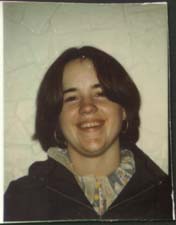Everyone knows about Jim Jones, the driving force behind Peoples Temple. What is less known are the stories of everyday citizens of Jonestown who died in Jonestown in November 1978. Introducing these people to the world is the goal of my book.
How does anyone who was not personally part of Peoples Temple come to think that they have something to contribute to an understanding of it? My interest in Jonestown started with the same questions everyone seems to have. After some research, and stumbling along this website, I realized it’s all about the human need for community, people who needed and wanted to rely on those around them. But what about the people as individuals? As I dove more deeply, I realized there are so many books, articles and documentaries about Jim Jones, about the institution and structure and principles of Peoples Temple, and about the disaster of November 18th, but little about the people who were lost that night.
The first thing you notice as you look at the faces of those who died in Jonestown is their diversity. This group of people were different from each other in everything from age, race and background, to the family – whether biological, adoptive, or chosen – that they had in the Temple. Even the types of their smiles were different.
 And then, one of the faces really entranced me. Looking back, I think I saw a bit of my younger self in Trisha Cartmell. She was a 24-year-old smiling brunette with bright, sparkling eyes and a fresh face. Her picture looked as if it was taken while she was mid- laugh. As I read the remembrance, My Friend, Patricia, by Denise Davenport, tears filled my eyes. It is the story of a girl who always worked hard, gave all of herself to her friends and family every day, and saw the best in everything, That was when I realized what I had to do. I had to tell their stories, not just Trisha’s, but the stories of all 918 souls who lost their lives that night in their human search for meaning, for community and for a safe place to land.
And then, one of the faces really entranced me. Looking back, I think I saw a bit of my younger self in Trisha Cartmell. She was a 24-year-old smiling brunette with bright, sparkling eyes and a fresh face. Her picture looked as if it was taken while she was mid- laugh. As I read the remembrance, My Friend, Patricia, by Denise Davenport, tears filled my eyes. It is the story of a girl who always worked hard, gave all of herself to her friends and family every day, and saw the best in everything, That was when I realized what I had to do. I had to tell their stories, not just Trisha’s, but the stories of all 918 souls who lost their lives that night in their human search for meaning, for community and for a safe place to land.
For some, like Trisha, they were born into a “living breathing organism of a community” (as one survivor called it). For others, like Minnie Murral Buckley, a Black 37-year-old mother of six kids who escaped an abusive husband, it was for the safety of her and her family. Or like Lula Ruben, a 71-year-old Black widowed woman, who saw the Temple as a racism-free home after decades living in the South during its Jim Crow era. No matter how they came to the Temple, they have stories that deserve to be told and heard.
Unfortunately, some people we will never know enough about. Due to the nature of the government’s record-keeping for Southern Black families (almost nonexistent), being unable to rely on government documents and the loss of anyone who knew them, sometimes there just isn’t enough left to tell their stories. I have made it my goal to at least try.
It’s been two years since the day I started my research. In that time I have been lucky enough to speak to the people who run the Jonestown Institute, consult other Jonestown researchers and even to speak to many Temple survivors themselves! Through all of the research, interviews and typing – so much typing – I’ve learned a lot and developed an even stronger passion to get this story out. I couldn’t have gotten this far without the help of each and every person that I have talked to and worked with so far, and I am endlessly thankful for all of the help.
Although my book is not done yet, it is so so very close. I cannot wait to share the stories of these incredible people’s lives with all of you.
(Sarah Rex is a 30-year-old epileptic disabled mother of two children. She would like to speak to anyone who has stories of those who died in Jonestown. Her other article in this edition of the jonestown report is The Single Seniors of Jonestown. She can be reached at Sarahelizabethrex@gmail.com.)